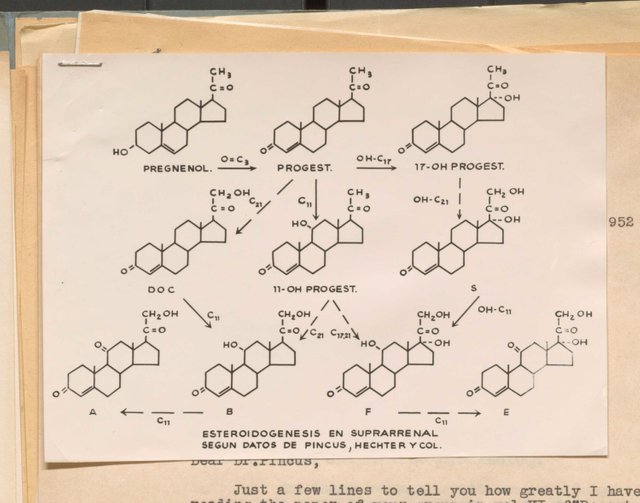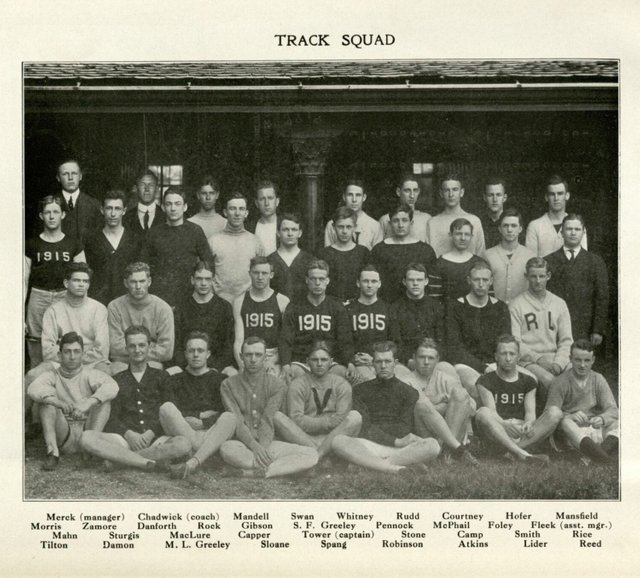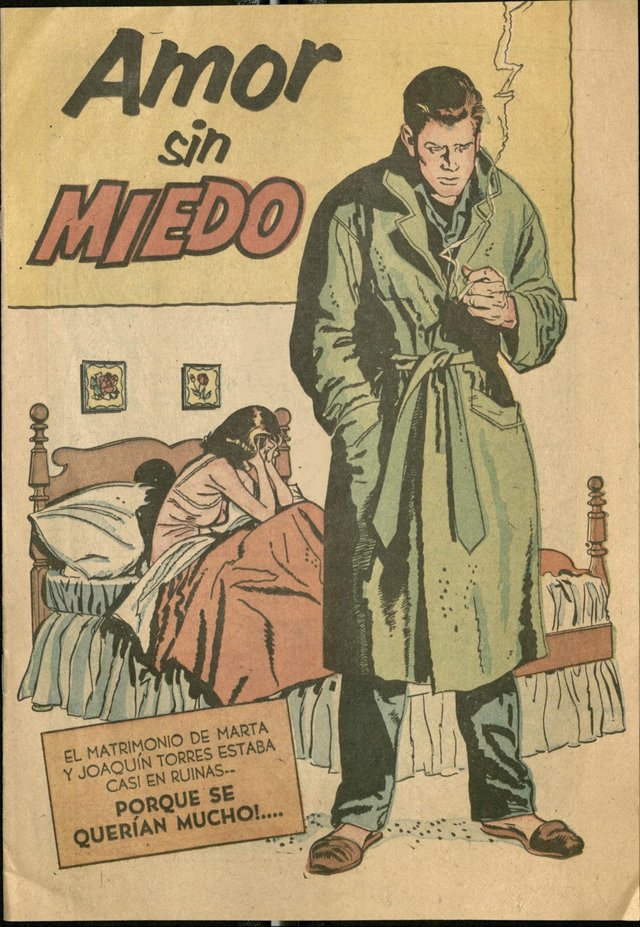Harvard and the Deep History of Birth Access

The trials began with small-scale tests on rats and rabbits. Each day, for a period of five days, researchers pumped immature female rabbits full of the reproductive hormones estrogen and progesterone. On the fifth day, the scientists allowed the rabits to copulate, then removed their fallopian tubes and examined them for signs of egg fertilization. For years, Massachusetts scientists worked diligently on hundreds of caged rabbits in a basement lab on a shoestring budget, searching for the perfect compound.
On June 23, 1960, a decade after the tests began, the hormonal birth control pill hit the market. The idea was simple: Take a little white pill once a day, avoid accidental pregnancy. The implications were revolutionary.
Women could work without fear of becoming pregnant. Sex before marriage became less risky. Sex after marriage became less fraught. Feminist historians herald this day as the beginning of the sexual revolution—but the story of the birth control pill is also one of conflicting ideologies and medical exploitation. The Harvard-educated scientists who formulated the pill relied on invasive tests and shaky medical consent.
The men who pioneered the pill got their start at Harvard. Gregory G. Pincus was an assistant professor at Harvard who would go on to research the mysteries of conception at his own lab. Although his methods were controversial, Pincus was willing to do whatever it took to advance his research.
John C. Rock, class of 1915, was a Harvard professor who spent his career attempting to understand fertility, hoping to combat what he saw as the main social ill of the day: overpopulation. Together, Rock and Pincus pioneered the development of the hormonal birth control pill through a series of clinical trials. After moving on from the laboratory tests, they ran a series of experiments on women in a Massachusetts asylum and poor neighborhoods in Puerto Rico.
By 1965, 6.5 million American women were taking it daily, making it the most popular form of birth control on the market. Today, the pill is used by over 100 million around the globe.
Though revolutionary, the final product came at the expense of the women involved in these trials. The Harvard doctors sometimes tested the birth control pill without patient consent, raising questions about research practices at Harvard and beyond.
THE MAD SCIENTIST
Gregory G. Pincus, former assistant professor of General Physiology at Harvard, was in it for the science.
Despite being one of the key figures behind the pill, he was ambivalent about its applications. “I am against women having sexual freedom,” Pincus said in a 1967 interview. “But I hasten to add that I am also opposed to sexual freedom among men.” He created the pill, more or less, because it would answer a scientific question, not a social one.
After earning his bachelor’s degree in biology at Cornell in 1924, Pincus enrolled in the Ph.D. program at Harvard . There, he was mentored by a biologist named William J. Crozier who would change the way Pincus thought about science. Crozier and his followers believed something revolutionary: Animal processes had a chemical basis. Even complex phenomena like reproduction could be understood through reactions and equations. Pincus took this to heart, calling many of his later critics unscientific “mystics.”
After earning his doctorate, Pincus was hired as an assistant professor at Harvard. He made a name for himself studying reproduction in rabbits, understanding for the first time how hormones interacted with the developing egg. Eventually, he coaxed rabbit eggs to develop into embryos without fertilization. All he needed to know was the chemistry.
But press coverage of Pincus’s frankenbunny was overwhelmingly negative. A piece in Collier’s portrayed Pincus as a nefarious mad scientist with “dark penetrating eyes narrowed to slits.” The New York Times ran with a headline that read in part “Huxley Fantasy Made Real by Harvard Biologists,” referencing the dark reproductive science of “Brave New World.”
Harvard, mindful of public relations, took note: In 1937, Pincus learned he would not receive tenure. According to historian James Reed, Pincus was seen “as a self-advertising Jew who published too soon and talked too much.”
Because of his single-minded determination to get results and his own experience with anti-Semitism, Pincus became known for supporting scientists he thought were talented, regardless of other considerations. He never understood why a scientist like himself could be fired for reasons other than their merit.

In 1944, Pincus co-founded the Worcester Institute for Experimental Biology. After years of struggling with university politics, Pincus could create an island of pure science.
Pincus got his start in Worcester right as chemists discovered that Mexican wild yams contained compounds similar to hormones in humans, spurring an explosion in drug development. Previously, hormonal research was limited by costs; researchers had to use compounds painstakingly extracted from animals. After the discovery, hormones could be mass produced on the cheap.
This new technology kickstarted a massive global race to find the next wonder drug. There were fortunes to be made.
With artificial hormones at his fingertips for the first time, Pincus escalated research at his newly-founded Institute, working closely with the G.D. Searle pharmaceutical company. Pincus also bought shares of Searle, creating extra incentive for discovery.
The competition was fierce. When medical trials began, Pincus would seek out experimental subjects with expediency in mind—not ethics.
THE GOOD DOCTOR
The mad scientist met his match in affable physician and Harvard professor John C. Rock. Unlike Pincus, Rock was deeply interested in the social implications of his science. By his own account, Rock was not a “research man.” “All I know,” he wrote to a colleague in 1948, “are some of the problems I want answered.”

He never pursued science for its own sake. He chose obstetrics and gynecology for the field’s relationship to social experiences like human sexuality, marriage, and love, as well as his Catholic faith. (Gynecology also involved relatively few years of training, another plus.)
After graduating from Harvard Medical School in 1918, he continued to work at Harvard, serving as a Clinical Professor of Gynecology for more than three decades. In 1923, Rock revived the Massachusetts General Hospital’s infertility clinic. The following year, he started a new infertility clinic at what was then the Free Hospital for Women (now part of the Boston Hospital for Women and Brigham and Women’s).
The Free Hospital, a yellow French estate house in Brookline, offered Rock a special advantage: Because it was a teaching hospital, Harvard-associated physicians had increased access to patients there.
Eventually, Rock began testing combinations of synthetic hormones on his low-income patients, a strategy he and Pincus would return to again and again in later research.
Rock had encountered artificial versions of estrogen and progesterone—the hormones that maintain the lining of the uterus—through his work on a national committee. He believed that the compounds might “develop” his infertile patient’s dysfunctional reproductive systems. The dosages were dangerously high—many orders of magnitude above what women take today. However, they appeared to have the desired effect: 13 of the 80 previously infertile patients became pregnant after the tests ended. His colleagues called this phenomenon “the Rock Rebound.”
Though they had been in some correspondence with each other starting in the 1930s, Pincus and Rock reconnected at a scientific conference in 1952. It was there that Rock discovered Pincus’s new anti-ovulation trials in rabbits used the same drug that he had used to spur fertility.
ADVERTISEMENT
The following year, the two researchers would begin a much larger trial on 60 patients from the Free Hospital and outlying clinics with the goal of determining the effect of progesterone on the menstrual cycle. Many of the women who did not become pregnant via rebound were disappointed by the compound’s misleading side effects, which mimicked the symptoms of pregnancy. Half of the women dropped the trial.
Unhappy with the results, Pincus learned an important lesson: He would need to take more drastic and less ethical steps to achieve the degree of experimental control needed to understand the compound’s anti-ovulatory effect.
Meanwhile, Rock had set his sights on the overpopulation issue. Over the following years, the goal of curbing population growth—especially among people he saw as inferior—would become a way of reconciling his contraception work with his Catholicism, and a rationalization for working on nonconsenting subjects. “People like to have babies. And this is particularly so among primitive peoples.” Rock said in a WGBH interview a decade later.
By the mid-1950s, the two Harvard professors had joined forces, and their research was starting to show promise. All they needed was a patron.
THE CAGE
After her husband died on January 19, 1947, Katharine D. McCormick came into $35 million. A lifelong feminist and birth control advocate, she spent the money on what Margaret Sanger, famous feminist and Planned Parenthood founder, explained to her as “the greatest need of the whole [Planned Parenthood] movement”—“a simple, cheap, contraceptive.” Feminists had dreamed of a birth control pill a woman could take without a man’s knowledge, and Rock and Pincus were their best chance yet.
After testing hundreds of steroid combinations on lab animals, the G.D. Searle pharmaceutical company identified a promising candidate drug. Combining this with McCormick’s funds, the Harvard scientists were ready to execute large scale trials. But before they began, Pincus quietly performed additional experiments of his own.
Too many women had dropped out of John Rock’s early Free Hospital trials in Boston, and Pincus was unsatisfied with the results. McCormick, now his main funder, expressed frustration in a letter to Sanger, saying she wanted a “‘cage’ of ovulating females to experiment with.”
Lucky for Pincus, Harvard had a longstanding arrangement with the nearby Worcester State Hospital that could provide a solution. Through a Harvard foundation previously established by McCormick’s funding, some of Pincus’s Harvard colleagues had been conducting experiments on mentally ill patients there for years, according to scholarship by historian Jonathan Eig.
In 1954, under the guise of learning about the pill’s “possible tranquilizing effect,” Pincus launched a new trial. He recruited 16 female patients at the Worcester State Hospital, fed them birth control pill prototypes, then sliced into their uteruses in an effort to understand the drug’s effect on ovulation. When he was done, he published his findings.
Many were critical of his methodology. After the results of the experiment were published in “Lancet,” one doctor wrote to the editors: “This use as guinea pigs of chronic psychotic patients who are not able to give or withhold valid permission in physiological research of this type must be as repugnant to many of your readers as it is to me.”
But the criticism didn’t faze Pincus: He continued to experiment on psychotic patients at the Worcester State Hospital. In a 1956 experiment, scientists under Pincus’s direction performed testicular biopsies on 20 schizophrenic men without anaesthesia. According to letters and a draft of a scientific paper reviewed by The Crimson at the Library of Congress, Pincus was interested in the men’s “castration anxiety.”
Pincus refused to accept negative feedback throughout the trials, even when it was close to home. At one point, he quietly sent the drug to female family members. When one relative complained of serious side effects, Pincus offered to send her a different experimental concoction. She politely declined.
As the side effects of the pill became more clear, Pincus failed to acknowledge their gravity. He told the New York Times many years later, “These side-effects are largely psychogenic. Most of them happen because women expect them.” Pincus would repeat this message over and over again in the years to come.
When he exported his methods to Puerto Rico a few short years later, even his collaborators grew unsettled by his carelessness. During the large-scale clinical trials, the G.D. Searle Corporation medical director sent a cautionary note to Pincus’s partner, John Rock: “We here have long been disturbed by the casualness with which materials pass from Pincus’s animals to your patients.”
But the development of birth control—and other wonder drugs—happened during a relatively unregulated period of scientific history. The Nuremberg Code of 1947, which established the importance of informed consent, was not legally binding. The Kefauver-Harris Drug Amendments of 1962 and the Belmont Report of 1979, which required proof of drug safety and “respect, beneficence, and justice” throughout all human trials, had not yet been written.
American researchers had no formal obligation to obtain informed consent.
DESTINATION: PUERTO RICO
In the 1950s, Puerto Rico was the perfect place to test a contraceptive drug. Its laws were more liberal than those of the continental US, and there was already an established clinical network throughout the island. It was also the target of racial fear—its poor, Hispanic population worried many American overpopulation alarmists.
Eugenicist sentiment led to remarkably liberal reproductive regulation. Far ahead of the mainland US, Puerto Rico established family planning clinics in 1935, and authorized the teaching and practice of contraception in 1937.
But explicitly eugenicist legislation also codified forced sterilization. By 1955, 16.5 percent of Puerto Rican women of childbearing age had been sterilized. In a 1988 study of women who had been sterilized at the time, 16 percent reported that they had not made the decision for themselves.
Many on the island justified these practices. “The tragedy of the situation is that the more intelligent classes voluntarily restrict their birth rate, while the most vicious, most ignorant, and most helpless and hopeless part of the population multiplies with tremendous rapidity,” the governor of Puerto Rico wrote to Margaret Sanger in 1933.

In stark contrast, all contraceptive information and materials—including condoms, diaphragms, spermicides and jellies—were banned in parts of the mainland U.S. until the ’70s. Rock and Pincus had managed to run a few small experiments in Massachusetts by framing grants and reports around infertility and the menstrual cycle, but they would have a harder time justifying a large-scale contraceptive study on the continent. If they wanted to go big, they’d have to leave home.
As a U.S. territory, Puerto Rico was the simplest alternative. “Because of its semi-colonial status with the U.S., the ability to test on these women’s bodies seemed like these territories are an extension of us,” Gabriela Soto Laveaga, a professor of the history of science at Harvard, says.
Funded by population control enthusiasts, enticed by lax contraceptive regulation, and welcomed by an established clinical network, Rock and Pincus decided to export the final stages of their research to Puerto Rico.
A TOUGH PILL
They started small. Celso-Ramon Garcia, their colleague at the Worcester Foundation, recruited 20 female University of Puerto Rico medical students into an initial study in 1955.
This study had problems from the beginning: More than half of the participants dropped out, infuriating Rock, Pincus, and their staff. “If any medical student exhibited irresponsibility of this sort, I would hold it against her when considering grades,” one researcher wrote to Pincus.
The high dropout rate should not have been surprising: The trial was not easy by any means. According to the papers of Rock and Pincus, the methods involved considerable time and occasional pain, not to mention common side effects including blood clots, bleeding, and nausea. Every day, participants were made to take their temperature and a vaginal smear. Each month, their cervixes were dilated and tissue from their uteruses were collected. In some cases, women underwent laparotomies, a large incision meant to expose the abdominal cavity, so that researchers could observe their ovaries in real time.
Data obtained, the scientists left the medical students and prepared for the first official field trial of what would become the birth control pill. They created a prototype drug formulation—all they needed were subjects.
The researchers chose the Rio Piedras neighborhood of San Juan, where a housing development had been built for neighboring farm laborers. “As the families selected were landless, they were to some extent social problems,” one collaborator wrote in his notes. Poverty and immobility made the women living there perfect subjects for a controlled trial.
According to Laveaga, this strategic selection process was common at the time. “The regulations were more lax, but also you had this belief that some people could be experimented on: the ‘feeble-minded,’ people of color, the poor,” she says.
Once the researchers had chosen the neighborhood, a memo from Pincus to Rock indicates that they recruited 265 “sufficiently intelligent” women for whom “pregnancy would be acceptable, or at worst inconvenient.”
The study did not involve financial compensation, but they never had trouble convincing women to sign up. “We always had more people wanting to participate in our studies than we had drugs to supply,” Adaline P. Satterthwaite, a field doctor, said in an interview conducted in the ’70s by a historian at the Schlesinger Library.
Though many elements of the trials were exploitative, most historians agree that the women participated in the trials to gain access to reversible contraception.
“It’s easy to say poor women did not really know what was going on,” Laveaga says. She cites similar experiments, such as IUD trials in Costa Rica, where women lined up to participate. “This is not a black and white situation.”
But, as in the earlier trials, researchers had trouble convincing women to remain on the pill. Participation was arduous: For three months, subjects were made to take one tablet a day for the majority of their menstrual cycle and undergo regular testing. According to letters, social workers and doctors, including Pincus and Rock’s in-country collaborator Edie Rice-Wray, visited the subjects often, collecting vaginal smears on glass slides, recording side effects, and distributing tablets.
According to Pincus and Rock’s paper, 22 percent of women dropped out due to side effects, which remained severe.
There were other setbacks as well: An article appeared in the Puerto Rican newspaper “El Imparcial” decrying the tests as a neo-Malthusian campaign to sterilize women, a few women sold their pills on the black market, and there was constant opposition from the Catholic Church.
Yet the scientists forged ahead. In 1959, after additional trials in Puerto Rico, Haiti, and Mexico, Searle appealed to the FDA to make Enovid a contraceptive drug. The FDA approved its contraceptive use the following year.
After collecting the data, Pincus and Rock packed their bags and returned to Massachusetts, where birth control quickly became widely available.
It was a different story in Puerto Rico. The original price of Enovid—50 cents a pill, or $11 a month—was far too expensive for the publicly-housed laborers who had participated in the trials to afford. After months of enduring vaginal smears and more invasive procedures, most of the participants were left high and dry––denied both compensation and the drug they had helped create.
Indeed, in Puerto Rico, the benefits of the pill still aren’t fully felt. In 2002, the most recent year for estimates on contraceptive use on the island, 46 percent of women between 18-44 reported they were sterilized. Only 19 percent used oral contraceptives. As of 2008, 65.5 percent of pregnancies on the island were unintended.
Almost 60 years later, the dream of a magic little pill, the dream that drove so many poor women to sign up for an experimental drug, remains out of reach.
A PARTIAL HISTORY
Ten years after its first release, the birth control pill made headlines again during the Nelson Pill Hearings, a Capitol Hill investigation into the pill’s safety. When feminist activists noticed that no women were being invited to testify, they interrupted the proceedings and testified from their seats. “Why isn’t there a pill for men?” activist Alice Wolfson shouted. “Why are 10 million women being used as guinea pigs?”
Neither the physicians nor the protesters mentioned the Puerto Rican trials.
The trials were also omitted from HMS anesthesiologist Henry K. Beecher’s famous and damning 1966 indictment of the research practices of the day, published in the New England Journal of Medicine.
Beecher called out experimentation that privileged the wellbeing of “patients in general” over the patients undergoing the experimentation itself. Beecher questioned whether data obtained unethically should be published, “even with stern editorial comment.” The article vilified many of Harvard’s recent scientific advances and rocked the research world.
Since that time, far more stringent medical standards have emerged. Institutional Review Boards were established at universities around the country, in hopes that these kinds of studies would not happen again.
Still, medical history is often swept clean, praising progress without remembering those who suffered to create it. For the most part, the popular narrative of the pill is one of celebration. When a 2009 Harvard Gazette story discussed Harvard’s role in creating the birth control pill, they did so without referencing the Puerto Rican trials or the asylum testing. Pincus and Rock are largely remembered for their contributions to women’s reproductive empowerment, without reference to their troubling methods.
“Our obligation as regular citizens is to be informed, to know the history, and to ask the questions,” Laveaga says. “If we have a baseline of knowledge, it’s easier to contend, not forget, make it public, and acknowledge when mistakes have been made.”